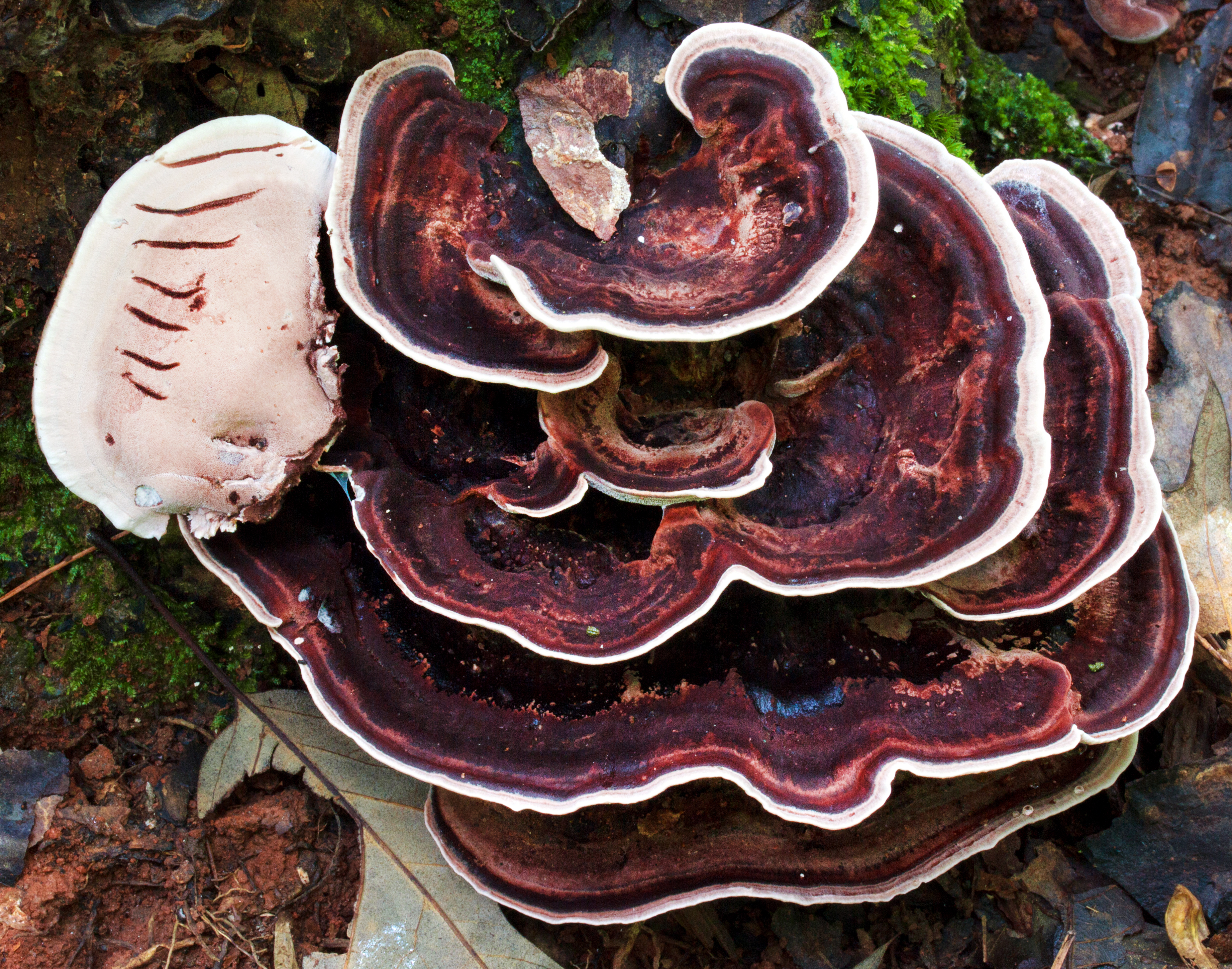|
Irpex
''Irpex'' is a genus of corticioid fungi in the order Polyporales. Species produce fruit bodies that grow as a crust on the surface of dead hardwoods. The crust features an irpicioid spore-bearing surface (for which the genus is named), meaning it has irregular and flattened teeth. ''Irpex'' is distinguished from the similar genera ''Junghuhnia'' and ''Steccherinum'' by the simple septa found in the generative hyphae. Classification Although ''Irpex'' has been classified in the family Steccherinaceae, or the Meruliaceae, phylogenetic analysis has shown that its type species, ''Irpex lacteus'', is more closely related to ''Byssomerulius'' in the Phanerochaetaceae. Justo and colleagues support a 2003 proposal that places ''Irpex'' as the type genus of family Irpicaceae. Species *''Irpex africanus'' Van der Byl (1934) – South Africa *''Irpex alboluteus'' Rick (1959) – Brazil *''Irpex aridus'' (Svrcek) Kotir. & Saaren. (2002) *''Irpex castaneus'' Lloyd (1920) *''Irpex conchifor ... [...More Info...] [...Related Items...] OR: [Wikipedia] [Google] [Baidu] |
Irpex Epitephrus
''Irpex'' is a genus of corticioid fungi in the order Polyporales. Species produce fruit bodies that grow as a crust on the surface of dead hardwoods. The crust features an irpicioid spore-bearing surface (for which the genus is named), meaning it has irregular and flattened teeth. ''Irpex'' is distinguished from the similar genera ''Junghuhnia'' and ''Steccherinum'' by the simple septa found in the generative hyphae. Classification Although ''Irpex'' has been classified in the family Steccherinaceae, or the Meruliaceae, phylogenetic analysis has shown that its type species, ''Irpex lacteus'', is more closely related to ''Byssomerulius'' in the Phanerochaetaceae. Justo and colleagues support a 2003 proposal that places ''Irpex'' as the type genus of family Irpicaceae. Species *''Irpex africanus'' Van der Byl (1934) – South Africa *''Irpex alboluteus'' Rick (1959) – Brazil *''Irpex aridus'' (Svrcek) Kotir. & Saaren. (2002) *''Irpex castaneus'' Lloyd (1920) *''Irpex conchif ... [...More Info...] [...Related Items...] OR: [Wikipedia] [Google] [Baidu] |
Irpex Lacteus
''Irpex lacteus'' is a common crust fungus distributed throughout temperate areas of the world. It is the type of the genus '' Irpex''. ''Irpex lacteus'' is considered a polypore, but depending on growth conditions it can also produce a hydnoid hymenophore. Due to this variability and abundance of the species it has been described as a new species to science numerous times and subsequently has an extensive synonymy. The complete genome sequence of ''Irpex lacteus'' was reported in 2017. ''Irpex lacteus'' is a white-rot fungus that inhabits mainly angiosperm branches and trunks. It is one of the most common wood-rotting fungi for instance in urban North America. It is inedible. The fungus has been identified as a cause of pulmonary infections in immuno-compromised humans. Taxonomy The fungus was first described in 1818 by Elias Magnus Fries, who called it ''Sistotrema lacteum''. Fries later made it the type species In zoological nomenclature, a type species (''species typica ... [...More Info...] [...Related Items...] OR: [Wikipedia] [Google] [Baidu] |
Irpicaceae
The Irpicaceae are a family of mostly polypores and crust fungi in the order Polyporales. Taxonomy The family was circumscribed in 2003 by mycologists Viacheslav Spirin and Ivan Zmitrovich. The type genus is '' Irpex''. Later multi-gene phylogenetic analyses of the Polyporales supported the use of this family. In these analyses, Irpicaceae is a sister taxon to the Meruliaceae; these two families, as well as the Phanerochaetaceae, form the phlebioid clade. Description Irpicaceae has both polypore and crust fungi. They have a monomitic hyphal system, containing only generative hyphae that do not have clamp connections. Their spores are thin-walled, smooth, and translucent. Cystidia are often absent from the hymenium. More rarely, some species are dimitic and/or with cystidia and/or clamp-connections present; for example, ''Emmia'' and ''Irpex'' have cystidia, and there are clamp connections in ''Gloeoporus''. Irpicaceae fungi produce a white-rot, except for one brown-rot genus ... [...More Info...] [...Related Items...] OR: [Wikipedia] [Google] [Baidu] |
Irpex Destruens
''Irpex destruens'' is a species of fungus in the family Meruliaceae. A plant pathogen, it causes stump rot. It was first described scientifically by English mycologist Thomas Petch Thomas Petch (born Hornsea, Yorkshire, 11 March 1870; died King's Lynn, Norfolk, 24 December 1948) was a prolific English mycologist and plant pathologist best remembered for his work on the interaction between fungi and insects. Biography P ... in 1909. References Fungi described in 1909 Fungi of Asia Fungal plant pathogens and diseases Meruliaceae Taxa named by Thomas Petch {{Polyporales-stub ... [...More Info...] [...Related Items...] OR: [Wikipedia] [Google] [Baidu] |
Steccherinaceae
The Steccherinaceae are a family of about 200 species of fungi in the order Polyporales. It includes crust-like, toothed, and poroid species that cause a white rot in dead wood. Taxonomy The family was circumscribed by Czech mycologist Erast Parmasto in 1968. Parmasto's original concept included species that are today classified in the Agaricales, Hymenochaetales, Polyporales, and Russulales. A large-scale molecular study published in 2012 by Otto Miettinen and colleagues redefined the limits of the Steccherinaceae to include most species of the poroid and hydnoid genera ''Antrodiella'', ''Junghuhnia'', and ''Steccherinum'', as well as members of 12 other hydnoid and poroid genera. These genera were traditionally classified in the families Phanerochaetaceae, Polyporaceae, and Meruliaceae. They commented: "we see the need for at least 30 monophyletic, morphologically distinguishable genera. These include no fewer than 15 new genera for both polypores and hydnoid fungi, and reviv ... [...More Info...] [...Related Items...] OR: [Wikipedia] [Google] [Baidu] |
